
2023 Hero Karizma XMR Review: Grand Comeback or Disappointing Sequel?
Hero's legendary Karizma is back in business with much fanfare. But is it a worthy successor to the original or just a disappointing sequel? We take it out for a quick spin to find out.
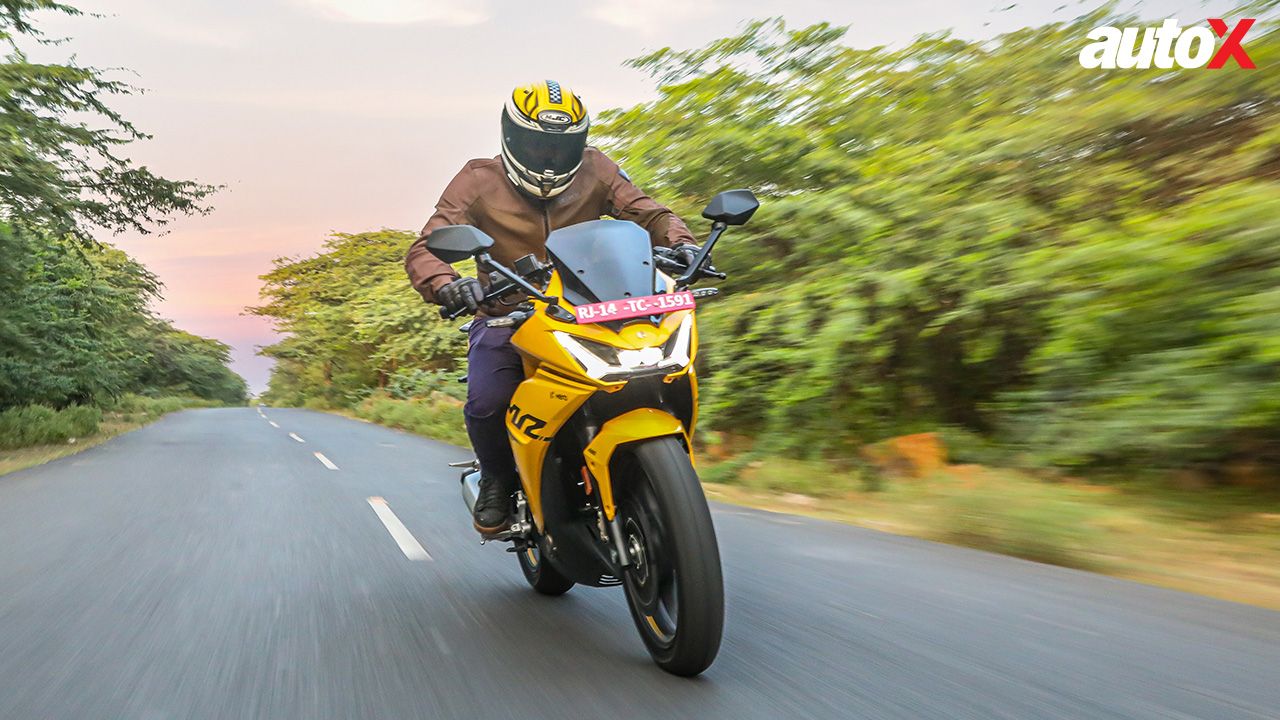
If you are a '90s kid, chances are that you will have vivid memories of the iconic Karizma – the motorcycle that introduced many of us to the world of sports bikes in India. It was, arguably, the first faired motorcycle for the masses. And as far as I can remember, it was a drool-worthy machine, especially in yellow.
Launched in 2003, the Karizma successfully established itself as a premium offering in no time and soon became a crowd favourite. However, after the separation of Hero and Honda in 2011, the Karizma’s sales performance began to dwindle. The arrival of newer and more modern rivals made things even worse, so much so that its production came to a halt in 2019-20.
However, the good news is that the legend is now back in business in an all-new avatar. Dubbed the Karizma XMR, it blends a heavy dose of nostalgia with a promise of modern innovations. The question, however, is whether it can live up to the hype. Is the new XMR worthy of the legendary Karizma nameplate? Let’s find out.
Also read: Hero Karizma XMR 210 Launched in India at Rs 1.73 lakh
Hero Karizma XMR Design & Features: Yellow Yellow Stunning Fellow!

While the original Karizma was a thing of beauty, the later iteration – the ZMR – had a fairing and proportions that only Hero’s designers could love. To be frank, its design was a bit awful! With the new XMR, though, Hero has finally redeemed itself, for it is an absolute stunner, for it has perfect proportions, with a sharp and sporty aesthetic, and not a single angle from which it looks anything but stunning. Sure, it’s still not a fully-faired motorcycle, as the engine and frame are still exposed, but it cuts a sporty figure and is one of the best-looking motorcycles in the segment, if not the best.
Plus, the X-shaped LED DRLs along with a projector, sleek LED indicators, clip-on bars, a stubby exhaust, and an overall sporty stance give it the quintessential sport bike demeanour. The dual-tone paint scheme, loud XMR logo, 3D Karizma monikers on the tank, fat tyres with a new alloy wheel design, and bright yellow paint scheme further enhance its aesthetic appeal.
The only minor complaint that I have is that its rear end looks relatively slim in comparison to the bulky front end, which results in it appearing rather small on the road from behind. Overall, however, there is no denying that Hero designers have simply nailed the design of the new Karizma. And that, I think, is half the battle won – its design will undoubtedly be one of its main USPs and will alone be able to draw the target audience to showroom floors.
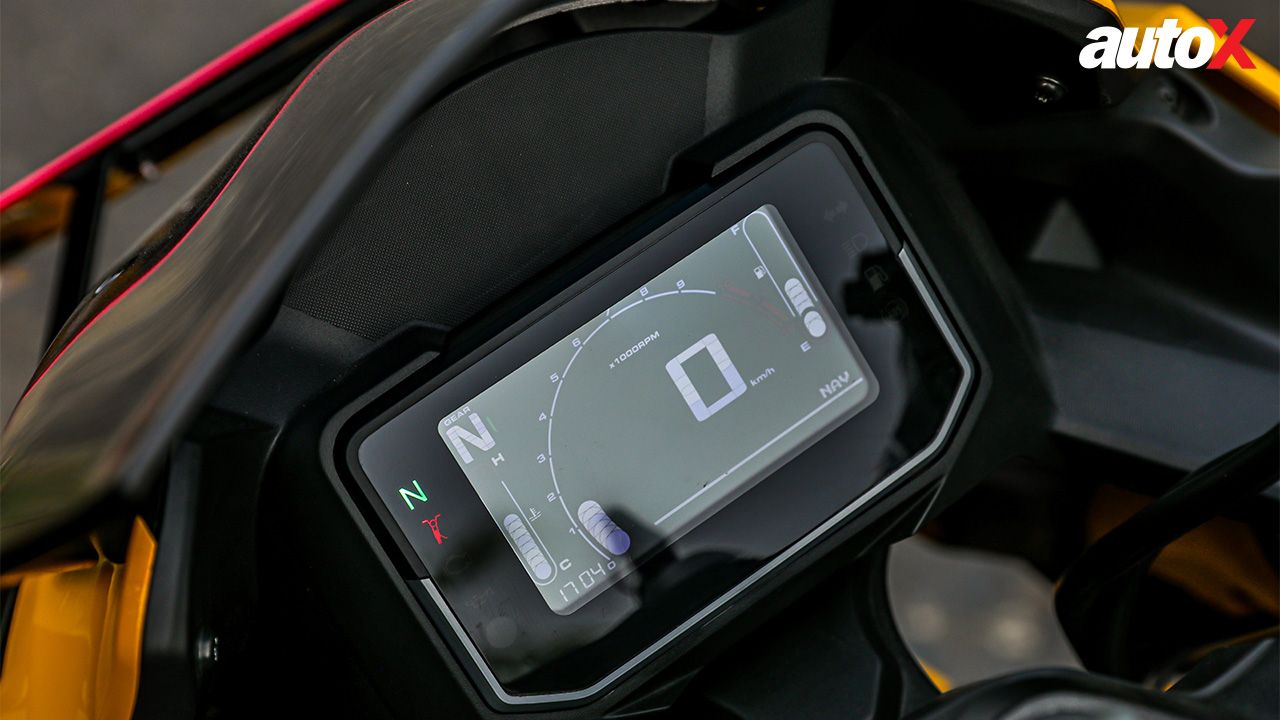
Another impressive aspect of the Karizma is its list of features. Apart from full LED lighting, it gets a colour LCD display, which comes with smartphone connectivity, turn-by-turn navigation, and all the usual stuff. It’s a decent unit with neat and clear readouts, albeit with a bit of limited visibility in direct sunlight. You also get a fast-charging USB port and an adjustable windscreen, which is operated via the ‘Visor’ button. Not sure how much of a difference it makes aerodynamically, but it’s a clever touch nonetheless.
The fit-and-finish levels are satisfactory but not the best in the segment. While the switchgear plastic quality is acceptable, it’s tacky in some areas. There are also multiple instances of exposed welds, something that you don’t expect on a premium flagship product. But, again, when you consider its pros and cons, the former undoubtedly outweighs the latter. Overall, the XMR offers a great package in terms of features and equipment.
In terms of comfort and practicality, the XMR quickly makes you feel at home – it’s the sort of machine that fits you as a rider like a glove. It’s compact, light (163.5kgs kerb weight), and an easy and effortless motorcycle, given its 810mm seat height. The saddle is large and spacious for the rider, but the split-seat setup is not ideal for the pillion. The footpegs are slightly rear-set, but the clip-on bars aren’t as low as they are on, say, the Yamaha R15, meaning that the riding position is quite upright. Long rides won’t be tiring since you don’t have to put all of your body weight on the wrists. The 11-litre fuel tank is neatly integrated, with deep recesses on either side for you to hold and grip the motorcycle firmly.
Hero Karizma XMR Engine Performance: Peaky Blinder
Let's talk about the heart of the matter, which, in this case, is an all-new 210cc single-cylinder four-valve DOHC liquid-cooled engine – it’s Hero MotoCorp’s first motorcycle to get liquid-cooling. The power output stands at 25.2bhp, while the peak torque is around 20.4Nm – quite healthy numbers for sure. Hero also claims that they are the best in the segment (200cc).
But all that is on-paper talk. What about its performance in the real world? First things first, it’s not an outright thriller, so if you were expecting it to offer earth-shattering performance / acceleration, well, you should lower your expectations. The engine has a linear power delivery, and in the sense, it has a strong low-mid low range – between 2,000 and 4000rpm, that is. After that, there’s a bit of a flat spot from 4,000 to 6,000rpm, and then it again picks up pace, rather briskly, until about 10,000rpm. It demands to be revved if you seek to extract the full performance it’s capable of. That said, it doesn’t give you that sudden kick like a Yamaha or KTM motor in the second half of the rev range. It’s quite subdued in comparison to those two. Again, not saying that it’s underpowered, but the engine doesn’t match the sportiness of its design.

During the test ride, we couldn’t take it on the highway, but it does manage to breach the 100km/h mark quite effortlessly. Vibrations are well contained for the most part – it’s only after the 6,000rpm mark that you will notice some through the tank and bars.
The XMR gets a six-speed gearbox, which you don’t necessarily have to work all the time because of its short ratios and tractable engine. The gear shifts, however, tend to be a little notchy. I would, however, give it the benefit of the doubt since we were riding a brand-new motorcycle – the shift quality should improve post the run-in period. The clutch lever is light to operate, thanks to a slipper and assist clutch.
Overall, I'd say the engine performance is quite subdued, leaving you wanting more. It falls a little short of what I was expecting.
Also read: 2023 Hero Xtreme 160R 4V Review: Can it Turn the Segment on its Head?
Hero Karizma XMR Ride-and-Handling: Firm Footed
The Karizma XMR features an all-new steel trellis frame. The suspension setup, however, includes a conventional telescopic front fork, instead of an upside-down unit, which is a bit of a downer. I find it quite surprising, for even the smaller, recently launched Xtreme 160R 4V gets 37mm KYB inverted forks. At the rear, shock absorbing duties are taken care of by a pre-load adjustable mono-shock.

Due to our limited time with the motorcycle, we couldn’t put the Karizma through its paces. However, on some bad and uneven roads, in and around Gurugram, it was evident that despite featuring a conventional setup, the Karizma’s suspension has been tuned to offer a supple and comfortable ride – well-damped with a slight hint of firmness. As for its handling, we didn’t get a chance to throw it around sharp bends, but it does feel light and agile and tips into corners effortlessly. I would, however, reserve my judgment about it until I ride the motorcycle to my heart’s content. In traffic and everyday riding, it doesn’t feel cumbersome or unwieldy, though.
What could have been better is the brake feel and performance. Despite featuring a large 300mm disc at the front and a 230mm disc at the back, the setup doesn’t offer enough bite, which is particularly evident when you are riding at triple-digit speeds and want to slow down quickly. Dual-channel ABS is standard – in fact, the XMR is the first Hero motorcycle to get it.
Verdict
It may not be perfect, but there’s no denying that the Karizma XMR is a mighty impressive machine. Sure, it does miss out on a couple of goodies, and the engine could do with more poke. However, as an overall package, it’s a job well done, especially considering its pricing and positioning on the market against rivals like the Yamaha R15, KTM RC200, Bajaj Pulsar RS200, and Suzuki Gixxer SF 250. Agreed, it’s not a legendary comeback as many had expected, but it has definitely brought the Hero of our childhood back to life without undermining its legacy. And for that reason alone, it's worth celebrating.
Engine: 210cc / Single-Cylinder/ Liquid-Cooled
Transmission: 6-Speed
Power: 25.2bhp @ 9,250rpm
Torque: 20.4Nm @ 7,250rpm
Price: ₹1.73 Lakh (Ex-Showroom, Introductory); ₹1.83 Lakh (Ex-Showroom, Post Introductory)
X-Factor: With its stunning design, new-age features, and decent performance, the Karizma XMR is a solid value-for-money everyday sports bike.
|
Pros • Features • Ride & Handling balance |
Cons • Brakes |


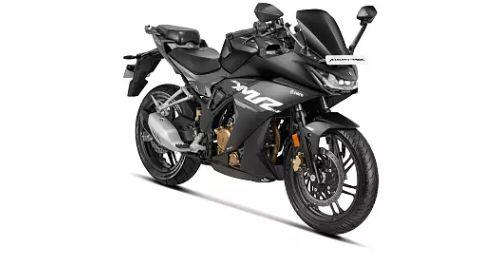

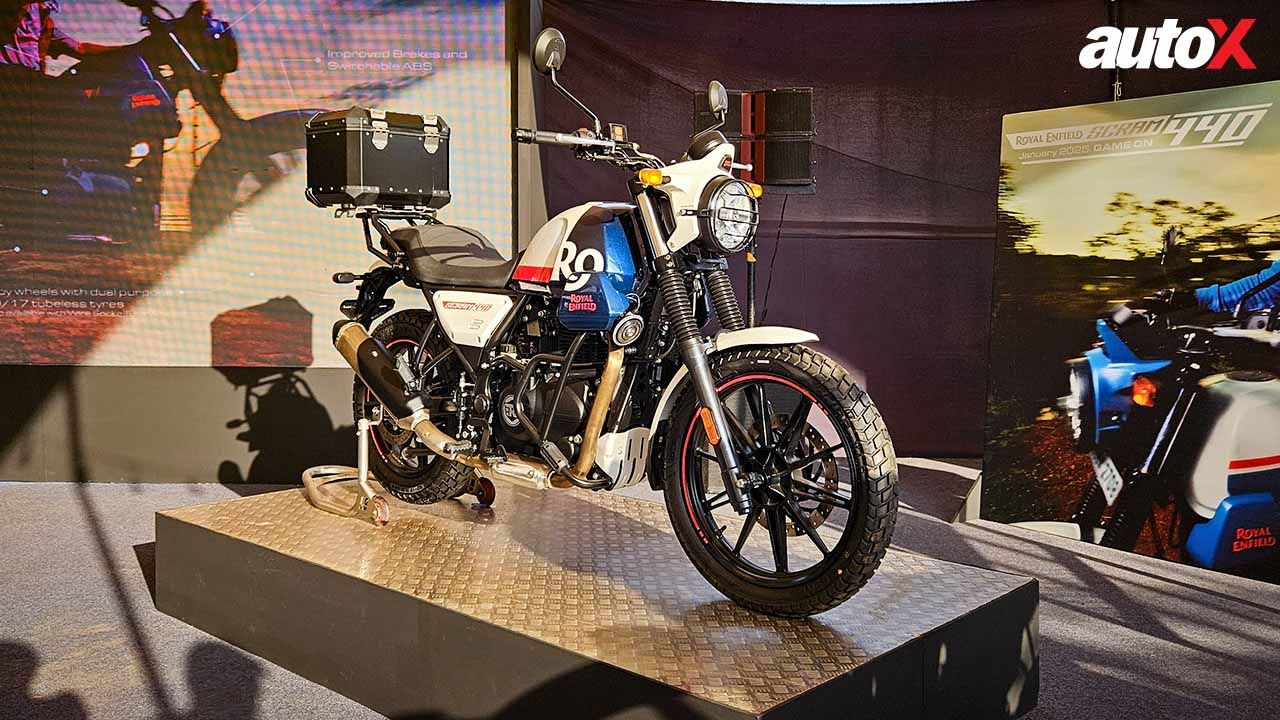
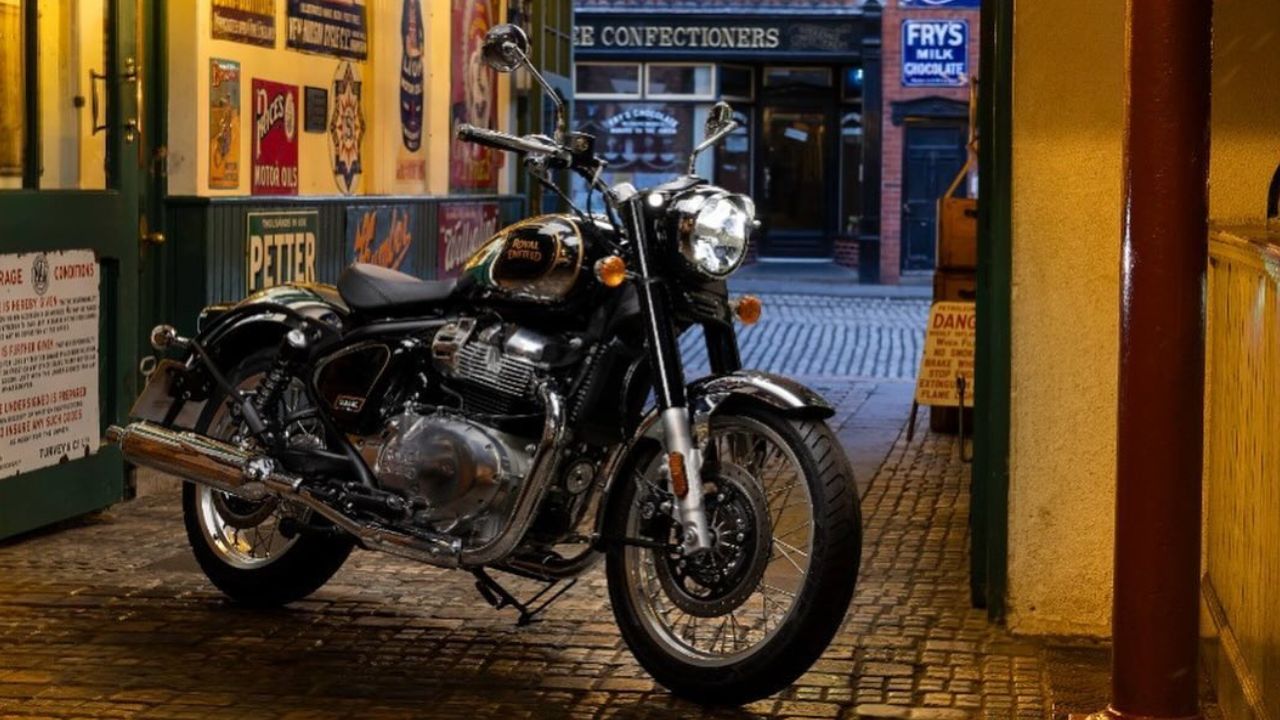
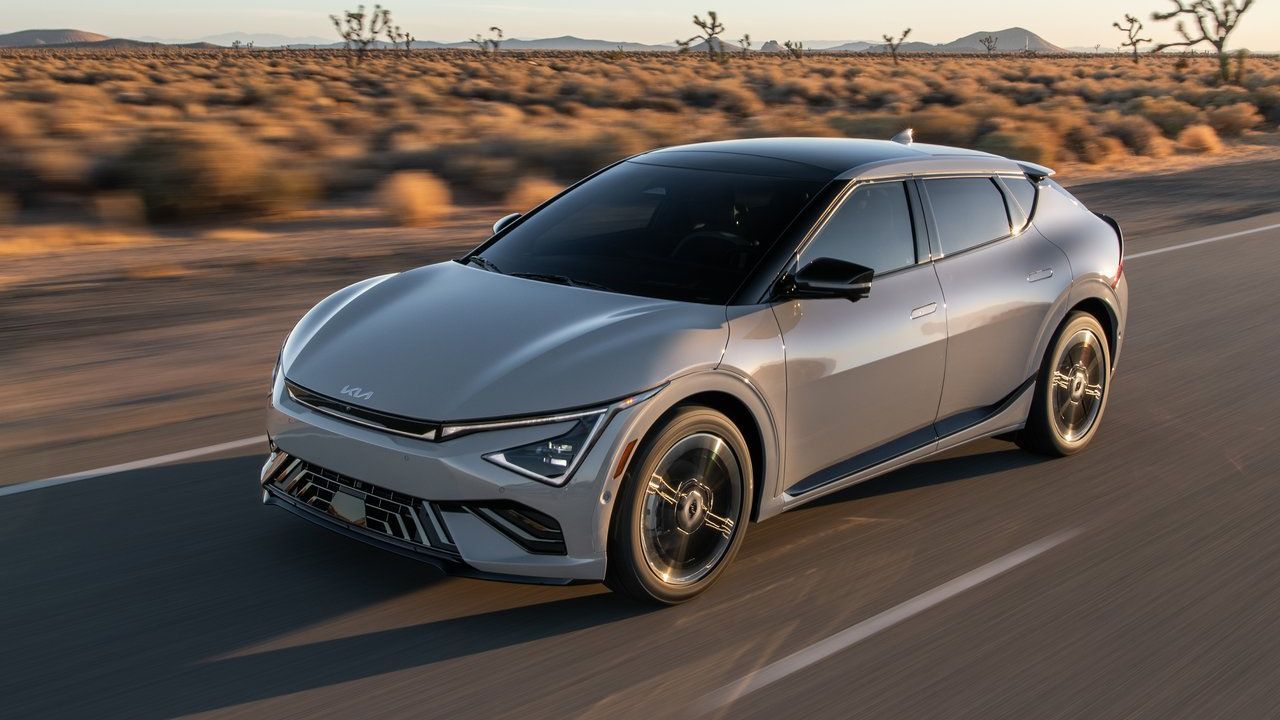
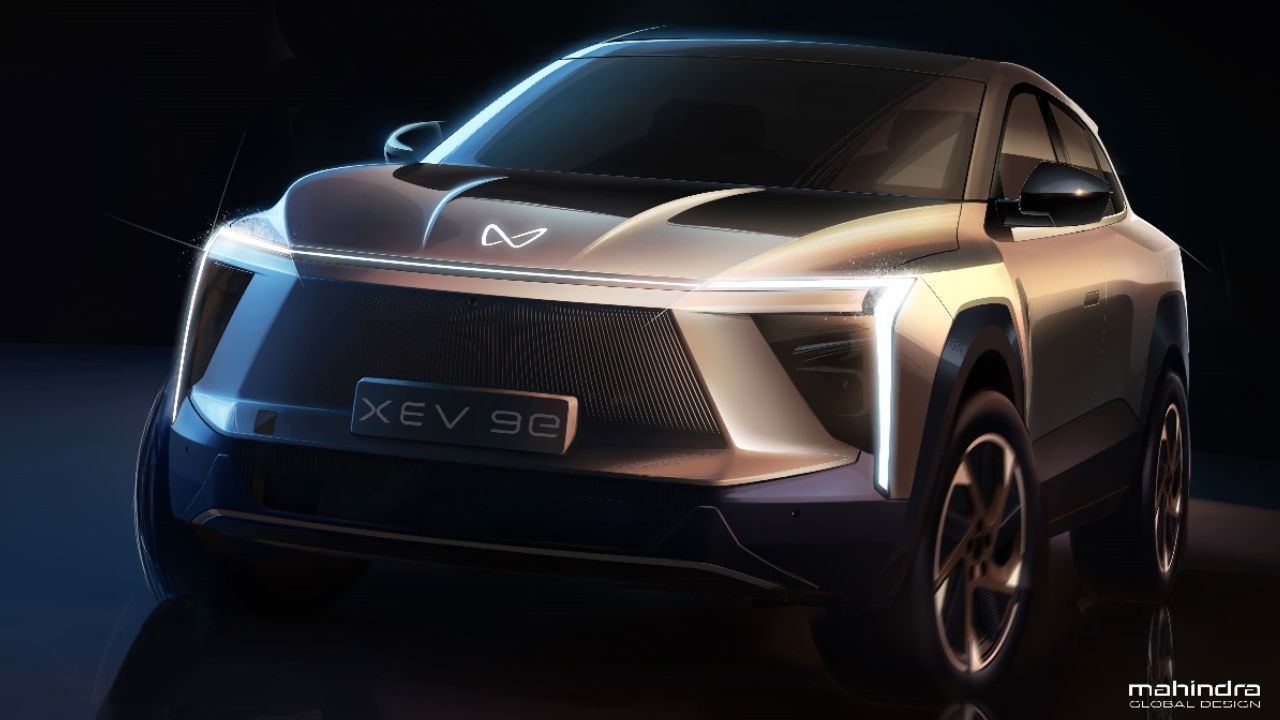
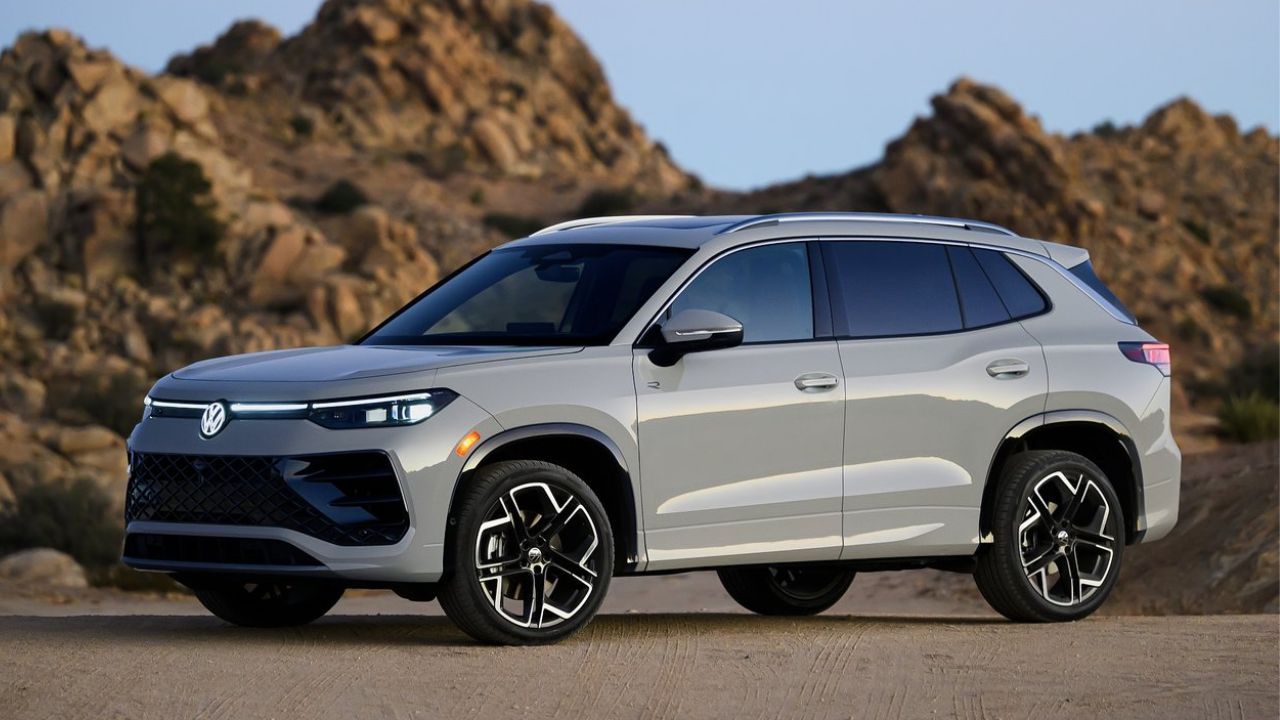
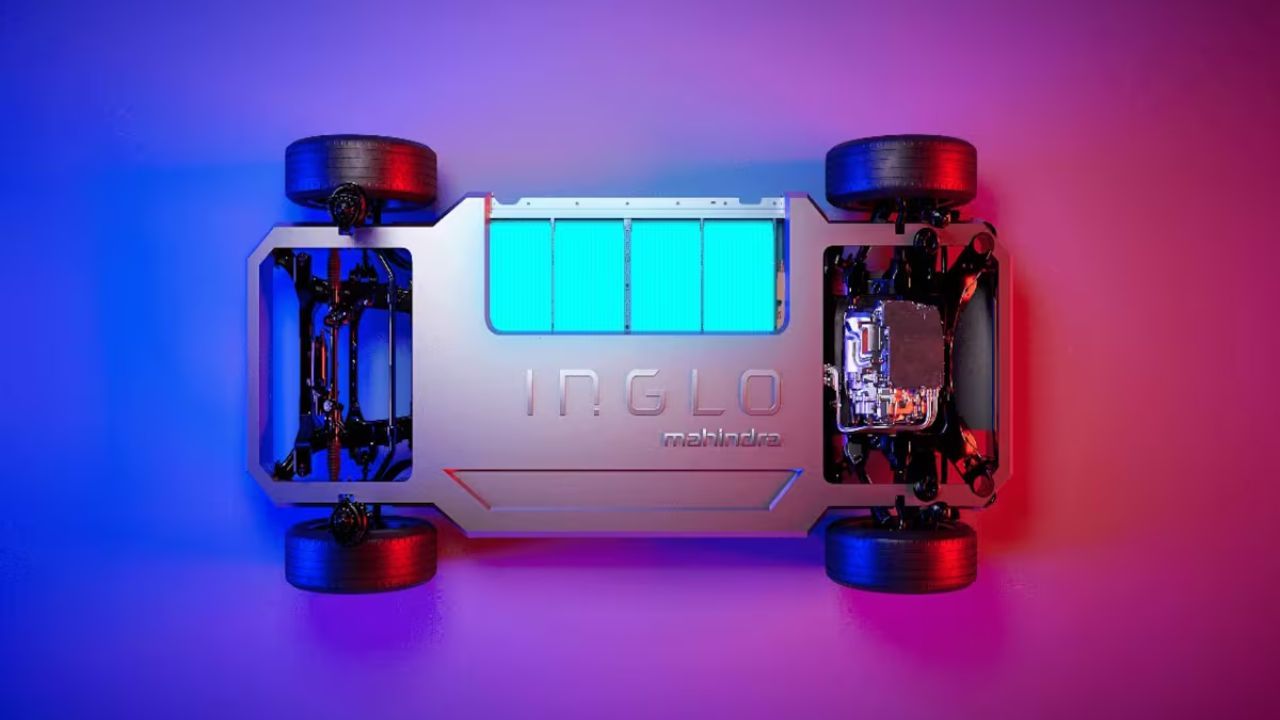
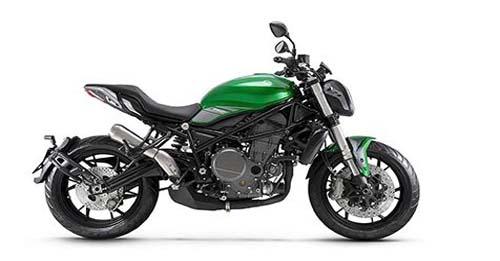
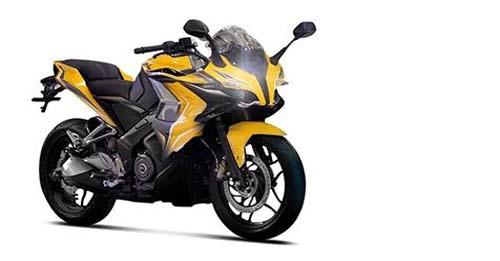
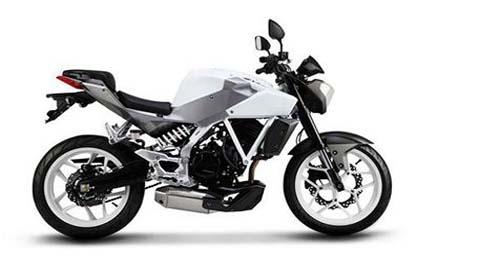
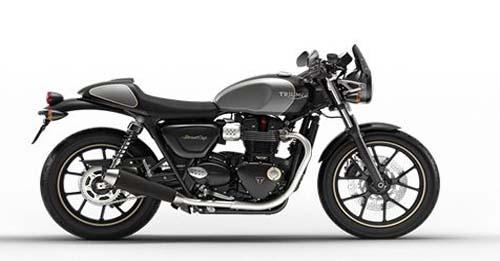
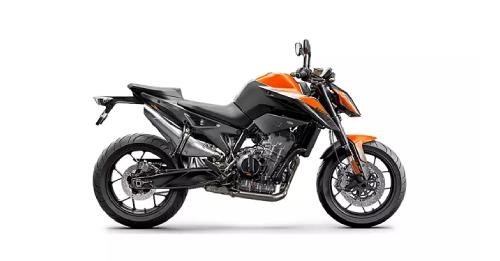









Write your Comment on